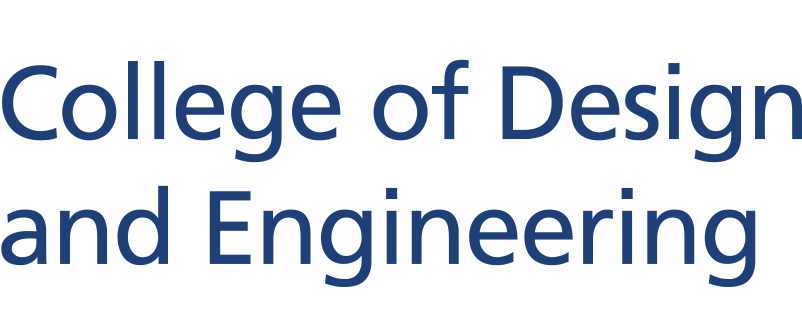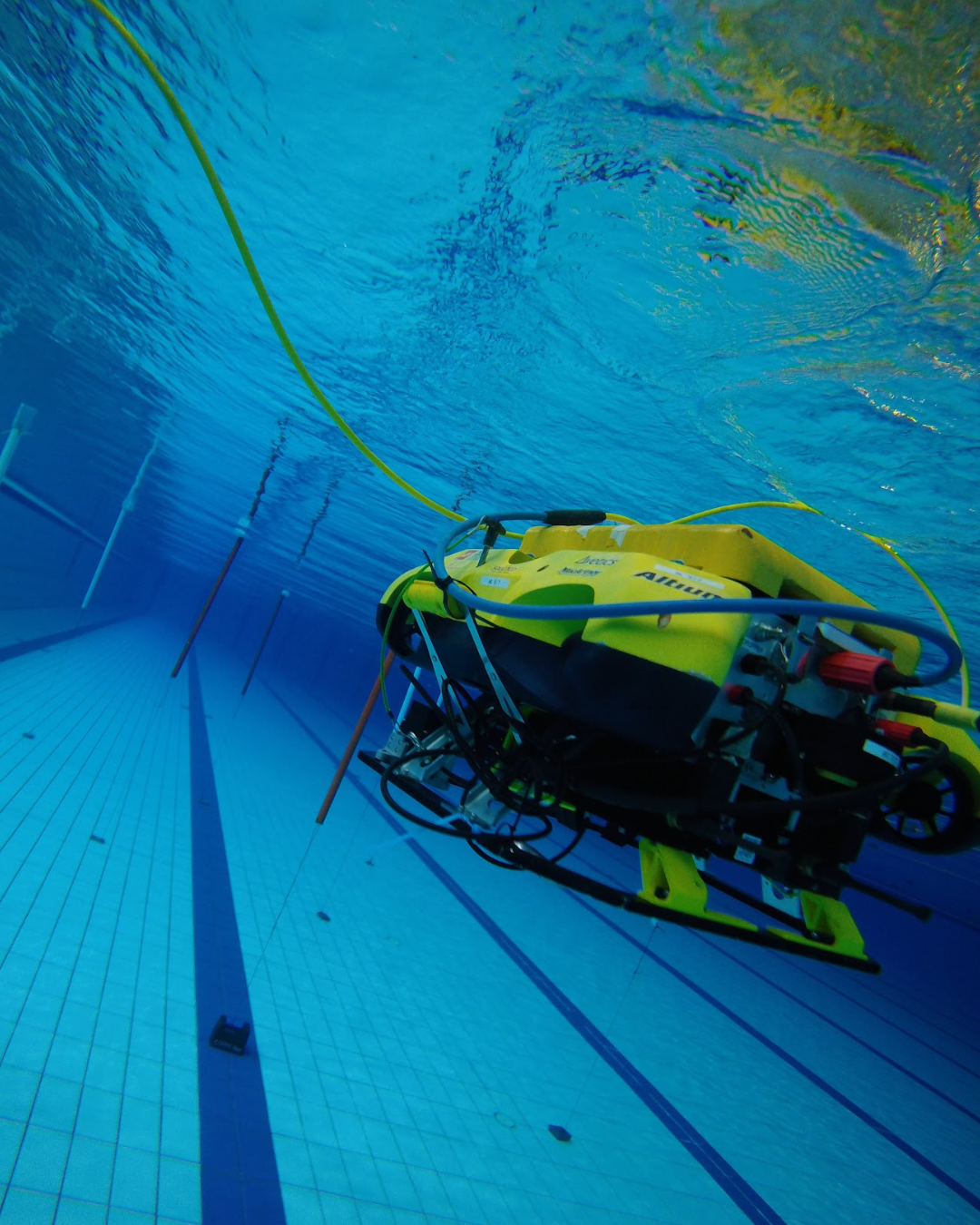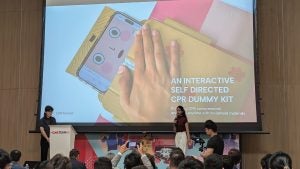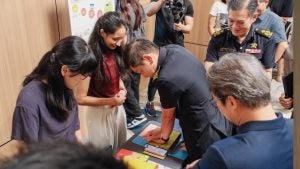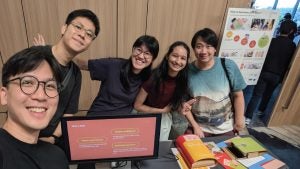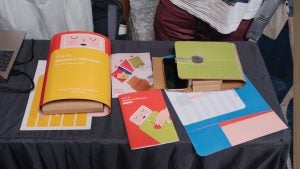STUDENT ACHIEVEMENTS & STUDENT LIFE
CDE undergraduate students and alumni tackle sustainability challenges through innovative projects and start-ups
At CDE, students and alumni are creating real-world solutions to tackle sustainability challenges. Meet the teams behind PlasticTinkers, EcoVolt and Cityscape Farms, all working towards a sustainable future.
PlasticTinkers
Edwin Lam (Master of Architecture) picked up 3D printing during COVID-19. As it became part of his workflow, he noticed the plastic waste it generated, which led him to co-found PlasticTinkers, a ground-up recycling initiative that recycles plastic waste. From PET bottles to old architecture models, to new 3D printing filament and products. One standout project: a collaboration with Yeo’s to create Singapore’s largest 3D-printed fortune cat from recycled materials.
“I wanted to find a way to make 3D printing more sustainable, and to shift how we see plastic, not as waste, but as a resource,” said Edwin.
EcoVolt
Wei Hao Ho (Year 4 Electrical Engineering, Second Major in iDP) is part of the four-person team behind EcoVolt, a smart plug-load management solution to reduce energy waste in buildings.
EcoVolt let me apply my core knowledge in embedded systems while expanding into power and IoT, areas I explored during my time in CDE,” said Wei Hao. “This is our only planet,” he added, a belief that drives their mission to reduce waste and make a real impact.
Cityscape Farms
Davian Chan (Electrical Engineering ’23) and Manzel Joseph Seet (MSc Computer Engineering ’24) , both of whom pursued a second major in iDP, are part of a four-person team behind Cityscape Farms SG, developing smart, scalable urban farming systems to support local food resilience.
“With Singapore’s limited land and manpower, combining agriculture and technology felt like a meaningful way to contribute to food security and supply chain resilience,” said the team.
The knowledge they gained through Electrical and Computer Engineering allowed them to prototype the control system and mechanical structure, bringing their concept to life.
They then tapped into tools and guidance from iDP to refine their solution. “Beyond tech, iDP gave us business and design skills that were crucial in bringing our solution to market.”
Through design, engineering, and collaboration, our students and alumni are turning ideas into solutions that address real-world challenges.
Read the full story here.
Biomedical Engineering and Industrial and Systems Engineering undergraduates develop IntelliBeats to support safer, more consistent labour monitoring
We are excited to celebrate the winners of the Outstanding Undergraduate Researcher Prize (OURP) and the CDE Innovation & Research Award (IRA) high achievement awards! These annual awards recognise our students’ achievements in research and innovation. OURP highlights the best undergraduate researchers across NUS, while IRA showcases outstanding student-led projects within CDE.
Among this year’s projects is IntelliBeats, a clinician-assistive tool developed to enhance diagnostic accuracy and reduce variability in interpreting cardiotocography (CTG) tracings, which are key graphs used in monitoring foetal and maternal health during labour. The project was developed by four Biomedical Engineering students and one Industrial Systems Engineering and Management student.
In the fast-paced Obstetrics and Gynaecology setting, clinicians must rapidly assess multiple variables such as foetal heart rate, maternal heart rate, and uterine contractions. This cognitive burden often leads to inconsistent interpretations and, in some cases, unnecessary interventions like C-sections. IntelliBeats addresses this challenge with a hybrid solution: software that colour-codes concerning decelerations on CTG graphs and hardware that prints key annotations for quick reference.
The project was developed under the Innovation and Design Programme (iDP). “We started with little knowledge of CTG but pushed through with rigorous research and countless iterations,” said Ong Jia Wen Amelia (Year 3 Biomedical Engineering, Second Major in iDP). Dr Tang Kok Zuea, the team’s supervisor, said, “This project is a great example of interdisciplinary learning and teamwork to create a clinical solution that can help clinicians improve the delivery experience for new mothers.”
Looking ahead, Lim Jie Le (Year 3, Industrial and Systems Engineering) said the team is exploring commercialisation and collaborating with more healthcare professionals and institutions to refine IntelliBeats further and support broader clinical adoption. “We hope to gather diverse clinical insights and ensure IntelliBeats becomes a robust, adaptable solution that benefits clinicians and patients.”
Team members:
- Deepsri Jayachandran (Biomedical Engineering, Class of 2026)
- Koh Qi Jie (Biomedical Engineering, Class of 2026)
- Lim Jia Le (Industrial & Systems Engineering, Class of 2026)
- Amelia Ong (Biomedical Engineering, Class of 2026)
- Jie Min Ooi (Biomedical Engineering, Class of 2026)
Supervisors:
- Dr Mark Chong
- Dr Tang Kok Zuea
Civil Engineering undergraduates reimagine construction with 3D printing
From computer models to construction sites, 3D concrete printing offers new possibilities. This technology is being explored by six Civil Engineering undergraduates, whose project earned this year’s Outstanding Undergraduate Researcher Prize (OURP) and CDE Innovation & Research Award (IRA) high achievement award. These annual awards recognise NUS students’ achievements in research and innovation across the university and within CDE.
Their project harnesses 3D concrete printing (3DCP) to develop a new structural system for prefabricated prefinished volumetric construction (PPVC). Through hands-on prototyping and small-scale testing, the team achieved strong interface bonding, geometric precision, and reliable composite action in printed walls, key for high-performance prefab construction.
Aung Zaw That (Year 4 Civil Engineering) said, “We were driven by our passion for digital fabrication, sustainable construction, and the challenge of rethinking how buildings are designed and built. Working as a team helped us tackle unexpected challenges and innovate at every stage.”
Looking ahead, the team plans to conduct full-scale axial and flexural tests to validate the system’s behaviour under real-world loading conditions. They will also investigate secondary effects such as local instabilities and stress redistributions and further refine the structural system to comply with building codes and construction standards. This ongoing work aims to ensure the robustness, scalability, and practical viability of their approach, paving the way for future deployment in the built environment.
Team members:
- Adler Chua Yu Cheng (Civil Engineering, Class of 2025)
- Aung Zaw That (Civil Engineering, Class of 2025)
- Justin Adrian Halim (Civil Engineering, Class of 2027)
- Seng Wei Liang, Ivan (Civil Engineering, Class of 2026)
- Sunny Wu Yihang (Civil Engineering, Class of 2027)
- Tan Kai Ying, Sue-Ann (Civil Engineering, Class of 2026)
Mentor:
Ng Jun Liang Ben (PhD candidate, Department of Civil and Environmental Engineering)
Supervisor:
Dr Du Hongjian
Environmental Engineering undergraduates drive sustainable urban planning with Buildings.sg
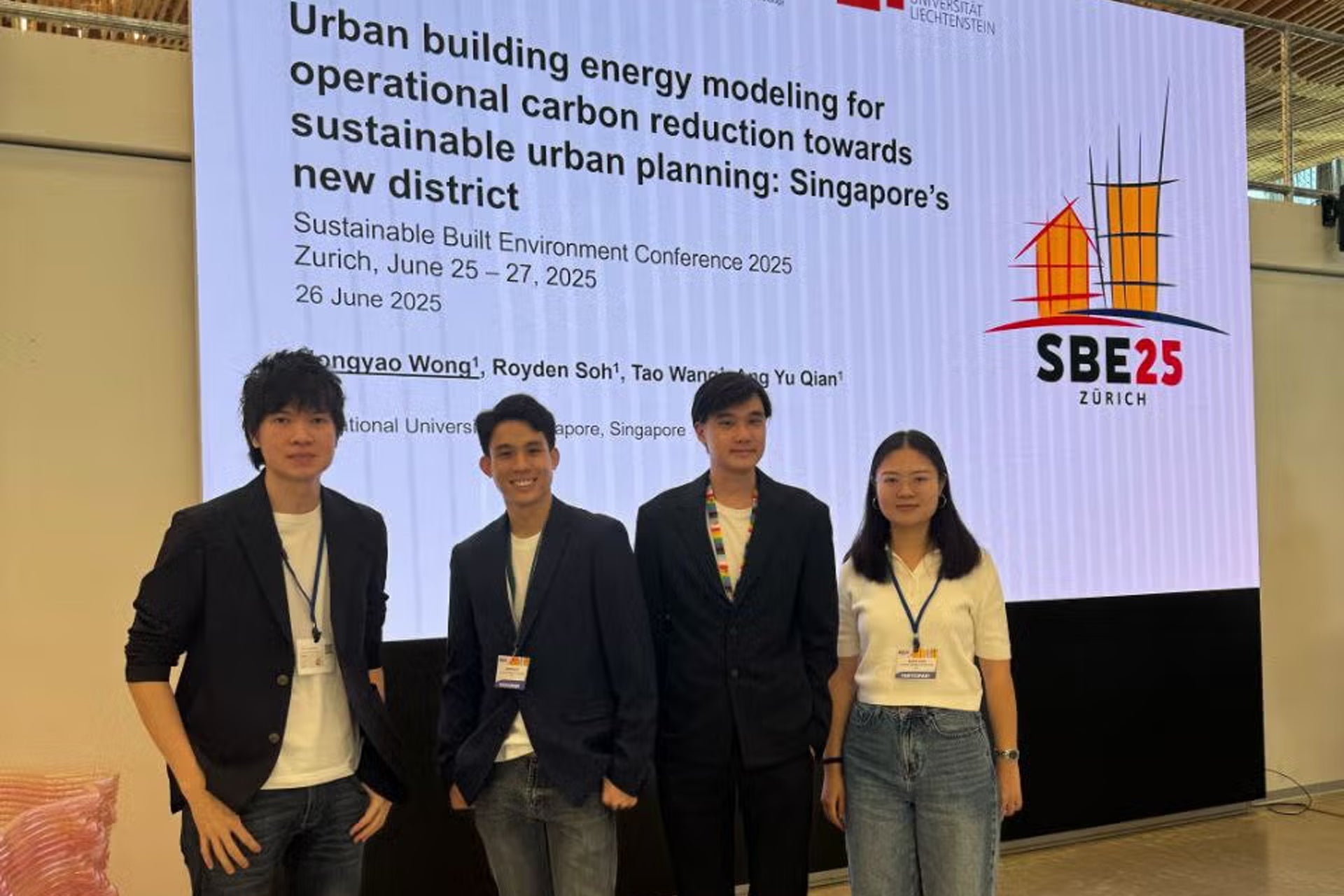
Rethinking how cities measure and manage carbon emissions, undergraduates Wong Hongyao and Royden Soh Wei Jun developed Buildings.sg, an integrated web platform designed to help shape Singapore’s sustainable future.
As one of this year’s Outstanding Undergraduate Researcher Prize (OURP) and CDE Innovation & Research Award (IRA) high-achievement award winners, Wong Hongyao and Royden created Buildings.sg to support carbon emissions modelling in the built environment, from construction to everyday operations. These annual awards recognise NUS students’ achievements in research and innovation across the university and within CDE.
Buildings.sg allows users to estimate emissions across a building’s lifecycle and assess the impact of policy decisions, with the goal of supporting more sustainable urban planning. The project is being considered for integration into the Urban Redevelopment Authority’s planning capabilities and could one day play a role in developing Singapore’s first net-zero district, Jurong Lake District (JLD).
Project supervisor Assistant Prof Ang Yu Qian said, “Hongyao and Royden work, developed in collaboration with the Urban Redevelopment Authority, holds strong potential to contribute meaningfully to Singapore’s built environment.”
Wong Hongyao said, “We wanted to create a meaningful application that integrates sustainability with the built environment, offering actionable insights for policymakers. Although we had to learn new concepts, software, and frameworks, the guidance from our supervisors and our determination to deliver a useful tool helped us overcome these challenges.”
Looking ahead, the team plans to further refine the platform for greater accuracy and reliability. This includes improving workflows, updating documentation, and working with local agencies to integrate more Singapore-specific data.
We look forward to seeing how Building.sg continues to evolve, and how CDE students like Hongyao and Royden will contribute to shaping a smarter, more sustainable Singapore through research and innovation!
Team members:
- Wong Hongyao (Environmental Engineering, Class of 2025)
- Royden Soh Wei Jun (Environmental Engineering, Class of 2025)
Supervisors:
- Assistant Professor Ang Yu Qian
- Associate Professor Olivier Lebreve
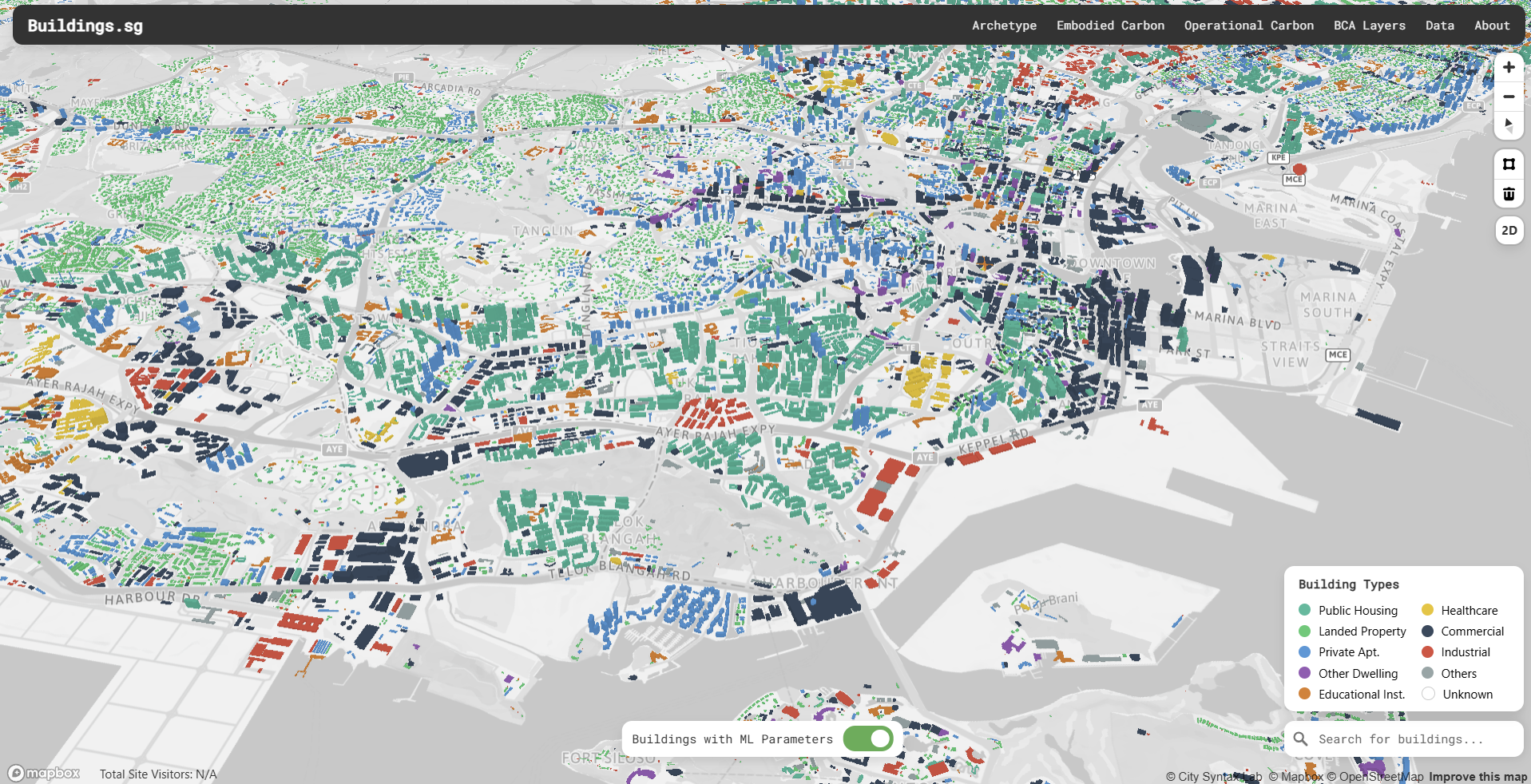
Environmental Engineering and Mechanical Engineering undergraduates selected for NEA YES Leaders Programme to turn ideas into action

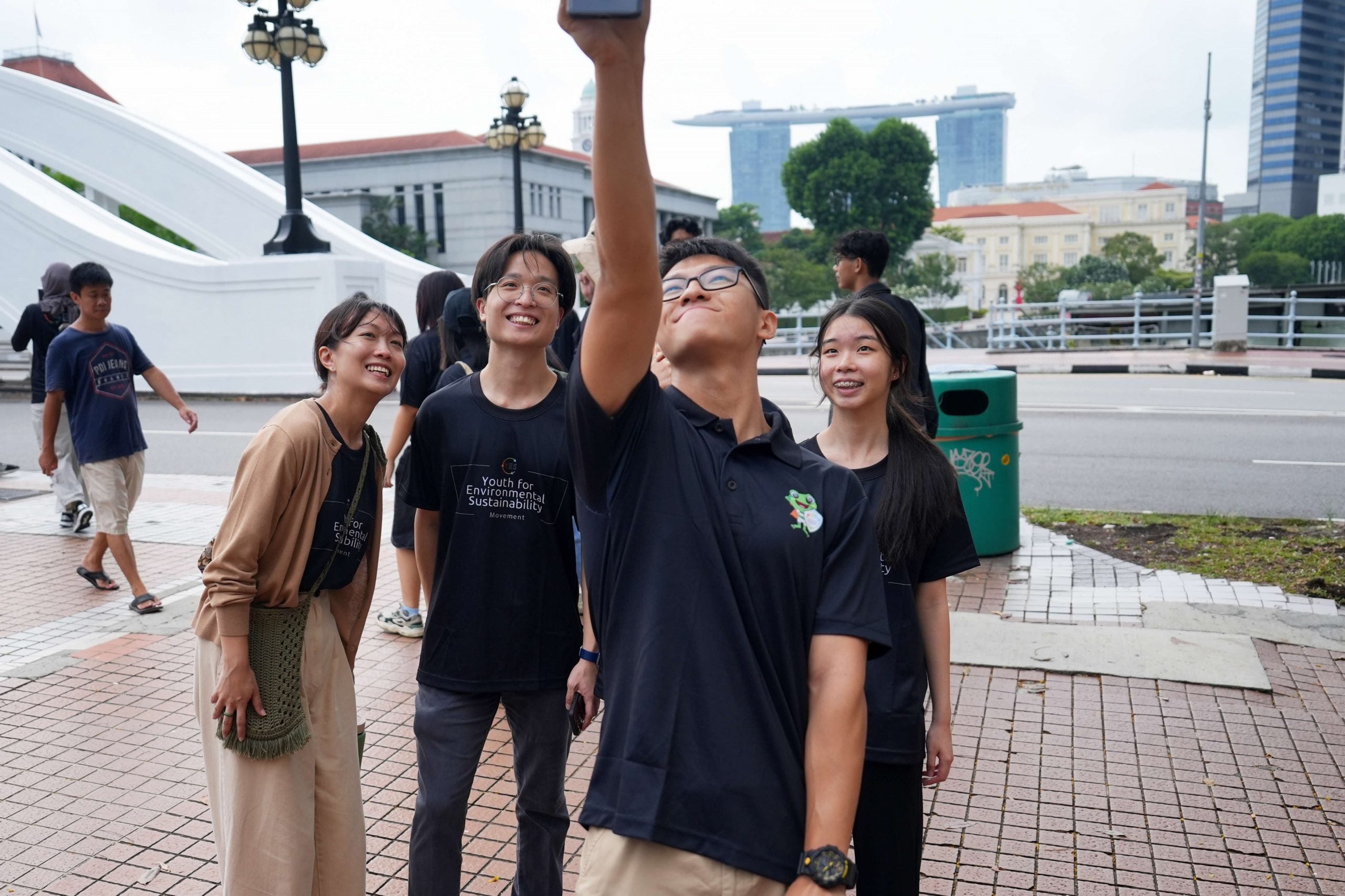
CDE students are transforming ideas into sustainability action! Two CDE undergraduates, James Wang (Year 4 Mechanical Engineering, Second Major in Innovation and Design Programme) and Amberly Pock (Year 2 Environmental Engineering) have been selected for the Youth for Environmental Sustainability (YES) Leaders Programme, supported by the National Environmental Agency (NEA).
With mentorship, training, and project funding, they are transforming their ideas into real-world solutions, making a lasting impact from campus to the community.
James is developing a compact, cost-effective recycling machine to tackle one of the most common but under-recycled plastics, polypropylene (PP). Designed for campuses and industries like construction and retail, the machine transforms PP waste into usable products such as 3D printing filament, household items, and plastic components, all without releasing microplastics. “Being selected reassures me that I’m not alone in making a real environmental difference,” said James.
Through the YES Leaders Programme, James is building his prototype and hopes to scale it as a practical, circular solution for plastic waste. “The support from the YES programme will help accelerate James’s project and amplify its impact,” said Dr Jovan Tan from the Engineering Design and Innovation Centre (EDIC), who is supervising his project.
Amberly and Keak Jie Yi (Year 3 Data Science and Analytics) are developing a digital tool to reduce food waste from NUS catering events, by helping organisers visualise and adjust portion sizes, encouraging smarter ordering.
Currently working with an NUS caterer to prototype the tool, the team hopes to expand it across campus providers and pass the project to future YES Leaders to grow its impact. “Their work tackles food waste at the source and supports NUS’s Zero Waste goals,” said Cher Lijun from the Sustainability Strategy Unit, who is supervising this project.
These projects reflect how CDE students are turning ideas into action and shaping a more sustainable future for all!
NUS team sets benchmark at 2025 Symposium on VLSI Technology and Circuits
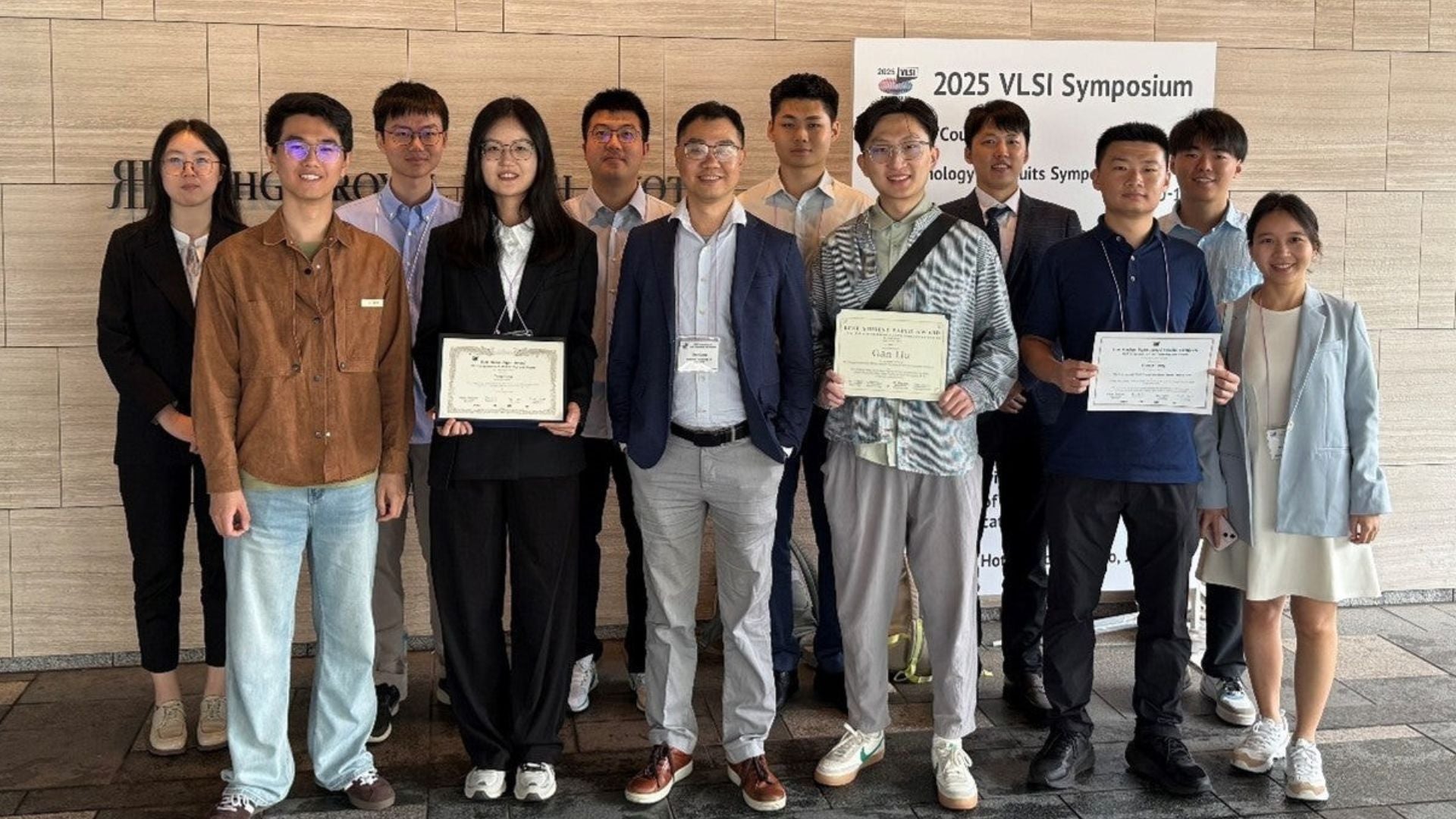
Associate Professor Gong Xiao’s research group achieved a global milestone with seven papers accepted by the 2025 Symposium on VLSI Technology and Circuits, which is the highest number among all academic institutions worldwide, reaffirming NUS' and CDE's leadership in semiconductor innovation.
Key recognitions include:
- Best Student Paper Award – Liu Gan (PhD student)
for uncovering key reliability insights in oxide semiconductor FETs
- Best Demo Paper Award – Feng Yang (PhD student)
for her creative and record-setting work on ferroelectric HZO - Best Student Paper Nominations – Wang Yuxuan & Xu Ying (PhD students)
for cutting-edge breakthroughs in ultra-short channel and 3D stackable devices
From 3D integration to ferroelectric technology, the team is powering the future of high-performance, energy-efficient electronics.
Read more about their work here: https://cde.nus.edu.sg/news-detail/nus-team-sets-benchmark-at-2025-symposium-on-vlsi-technology-and-circuits/
Electrical Engineering PhD candidate Lui Han receives the Best Paper Award at IEEE International Conference on Communications 2025 (IEEE ICC 2025)
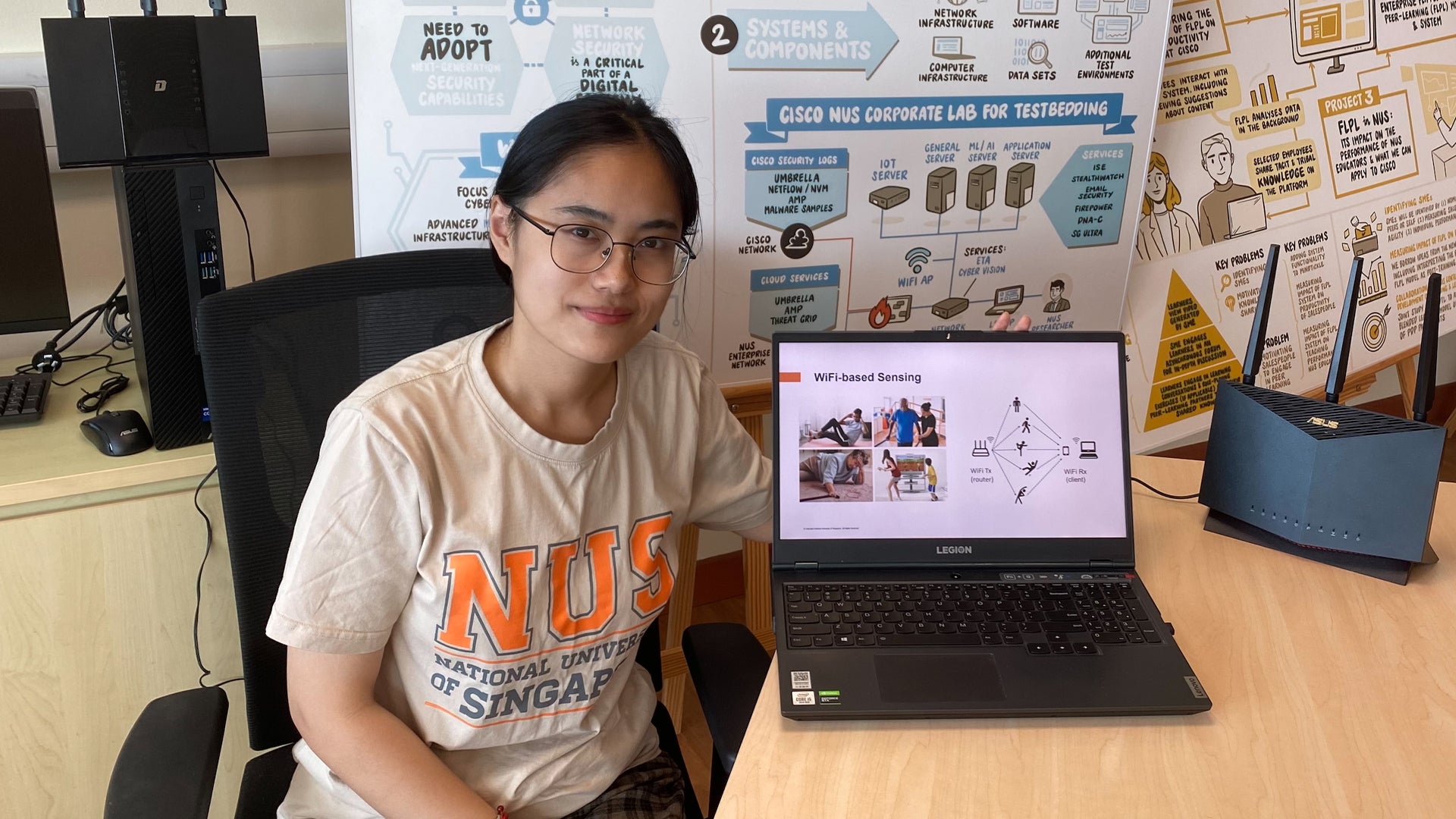
Congratulations to Lui Han, Electrical Engineering PhD candidate, on receiving the Best Paper Award at IEEE International Conference on Communications 2025 (IEEE ICC 2025) in Montreal, Canada!
The IEEE ICC 2025 is one of the flagship conferences of the IEEE Communications Society and a premier international platform for advancements in communication technologies. This year’s conference, themed “Communications Technologies 4Good,” spotlighted innovations that contribute to social welfare, sustainability, and inclusive development.
Lui Han's research, “GenFi: A Robust and Generalizable WiFi-Based Human Activity Recognition System,” introduces a novel framework that enhances the accuracy and adaptability of WiFi sensing across diverse environments—offering a scalable, privacy-aware solution for smart homes, healthcare, and security systems. Unlike conventional methods that rely solely on scenario-invariant features, GenFi integrates both general and scenario-specific representations. The framework leverages adversarial learning and meta-learning techniques to intelligently fuse these features, enabling accurate, stable, and lightweight activity recognition in unseen environments.
Read more to learn about Lui Han's project.
Team Bumblebee set to compete at RoboSub 2025
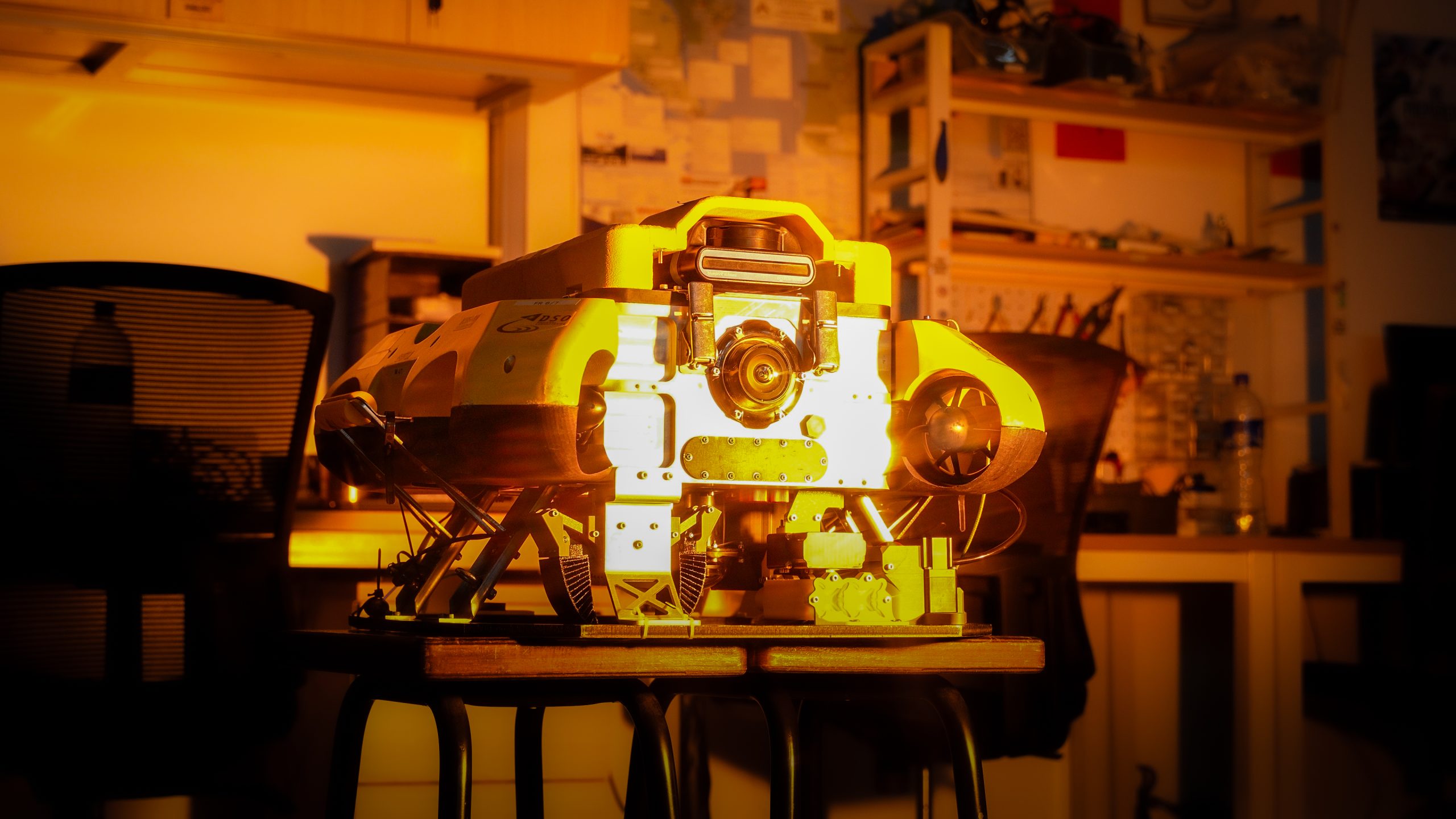
Wishing Team Bumblebee all the best as they head to Irvine, California, to represent NUS at RoboSub 2025!
Held from 11 to 17 August at the Woollett Aquatics Centre, RoboSub is an international competition that invites teams to solve real-world underwater robotics challenges, ranging from oceanographic exploration and mapping to detection and manipulation of objects. The competition brings together 58 teams from around the world.
The team comprises 55 students in total, 40 from Mechanical Engineering, Computer Engineering, Electrical Engineering, along with 12 from the School of Computing, two from the NUS Business School and one from the College of Humanities and Science, Physics. Of these, 23 members will be heading to Irvine for the competition.
The team has set itself a challenge by developing a smaller, secondary Autonomous Underwater Vehicle (AUV) to execute tasks in parallel during the competition, allowing them to attempt more tasks within the allocated runtime. Meanwhile, their flagship AUV retains its familiar structural design but now features redesigned manipulators, including a soft robotic gripper that better handles submerged test objects used in the competition, such as ladles and bottles.
The team last competed in RoboSub in 2023, where they clinched the championship title. After taking a break to focus on the Maritime RobotX Challenge, another international competition that advances autonomous maritime systems through complex navigation and obstacle-avoidance tasks. This year, they return to RoboSub with a newly trained cohort and a deep sense of determination.
“Regardless of the final rankings, I’m already proud of the commitment and passion of every member despite the short development cycle. We’re aiming to give it 100% and have a showing we can be proud of,” said Leong Deng Jun (Year 4 Computer Engineering), Team Lead of Bumblebee.
All the best, Team Bumblebee! We’re cheering you on from Singapore!
Division of Industrial Design team wins 3rd place at SCDF Innovation Challenge 2025
The Division of Industrial Design (DID) congratulates Anagha Ramesh (Master of Design in Integrated Design) and Ye Qian (PhD, Industrial Design), whose project, CPR Heroes, was awarded third place at the SCDF-Dell Lifesavers’ Innovation Challenge 2025.
The challenge, organised by the Singapore Civil Defence Force (SCDF), seeks innovative ideas to strengthen Singapore’s emergency preparedness. Out of 132 submissions, the team from DID stood out as the only CDE group to make it to the top five finalists, among a field largely made up of technology and computing undergraduates. After a month of mentorship from SCDF and Dell Singapore, they presented their project at the finals on 4 July 2025 at HomeTeamNS Bedok Reservoir.
CPR Heroes began as a project to raise awareness among children about responding to medical emergencies with CPR. It was first conceptualised by Anagha and her Master of Design teammates under the Ste*mpunk design platform, which Assistant Professor Clement Zheng ran in Semester 1 2024. The project builds on top of PaperTouch, a research led by Qian at the Interactive Materials Lab for building hybrid physical-digital interfaces. The project was initially tested with a DIY cardboard dummy that interacts with a web application, then tested at the Singapore Science Centre during the design platform. It was also tested with children, who are their main target audience.
While Anagha was interning at the Interactive Materials Lab, Qian teamed up with her to improve the framing, content, and prototype of CPR Heroes, culminating in this successful showcase at the SCDF Innovation Challenge.
As an observer of the SCDF Innovation Challenge and supervising instructor, Assistant Professor Zheng noted that, out of the five finalists, their team focused on impact, experience and feasibility. “While many teams explored visions of integrating AI into augmented reality platforms, often requiring significant budgets to realise, CPR Heroes stood out for its simplicity, working with a smartphone, three dollars’ worth of materials, and lots of creativity and prototyping," said Assistant Professor Zheng. This was further highlighted by the positive comments received from the attendees regarding the elegance of the solution.
Notably, one judge commented that CPR Heroes is a good example of something “low cost but high value”, and thus could be widely adopted. Deputy Commissioner Teong of the SCDF had also requested two copies of the CPR Heroes prototype as a possible part of their own outreach efforts.
Reflecting on the students’ achievement, Assistant Professor Zheng said, “I hope this inspires others in our Division and NUS. This is a success story of how our professional Master of Design programme and research programmes can work together.”
Team members:
- Anagha Ramesh (Master of Design in Integrated Design, Class of 2025)
- Ye Qian (PhD, Industrial Design, Class of 2025)
Supervisor:
Assistant Professor Clement Zheng


